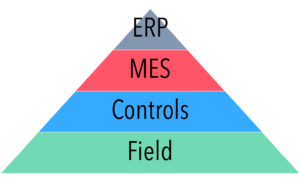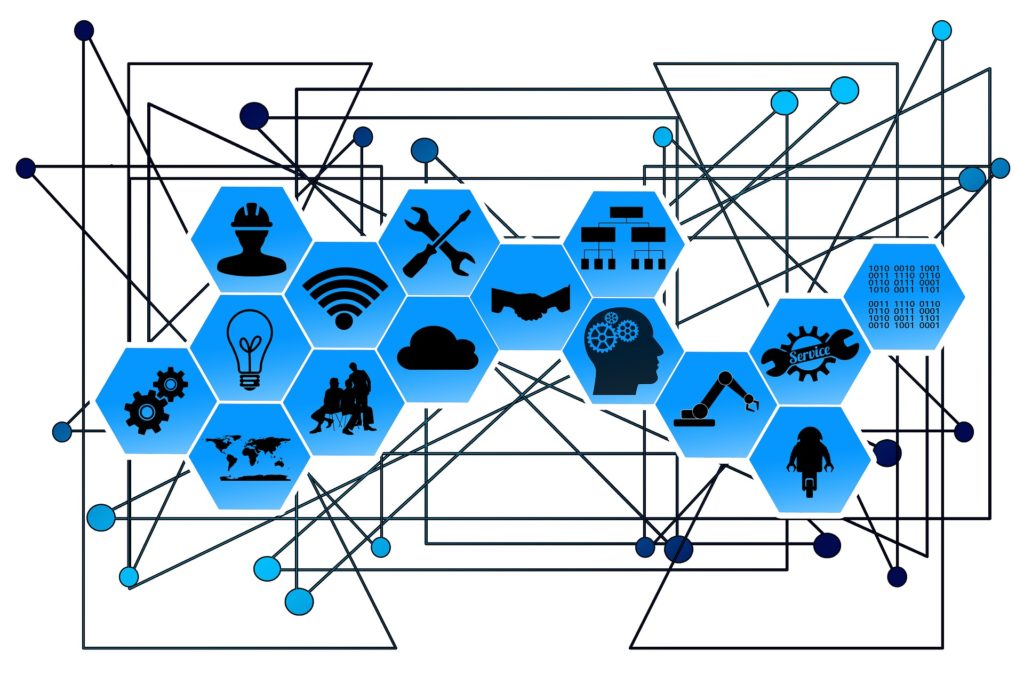Fostering an expanded relationship between the Field level and the MES level
The foundational reasons for employing Industrial Ethernet, at a bare minimum, to enable Industry 4.0 are well known. It creates enterprise-wide transparency, eases data access, provides standardized interfaces, and its mechanisms are broadly familiar. But Ethernet is not the only piece of the puzzle. It is just one of many enabling factors, especially when it’s important to remember to use the right tool for the right task.
Similarly, ‘enabling Industry 4.0’ is not just some flippant turn-of-phrase. Sure, for the past few years it seemed such terms were just different words for what we’ve been trying to do all along. Only now is it becoming clear there is actually something behind the talk. And it appears that a convergence of Information Technology (IT) networks and Operational Technology (OT) networks is the key. But what does that really mean? From a classic ISA95 perspective, it means that the Field level and the MES level are getting closer together.
In the traditional ISA95 model, Industrial Ethernet only plays a role at the lowest level (OT) in the Field. It connects to the Controls level, which then interfaces to an MES (IT). With Industry 4.0 (and the Industrial Internet of Things) boundaries between these levels are blurring. That said, the primary goal in the relationship between the Field level and the Controls level is well understood: to simply run the plant. As IT networks and OT networks converge, the relationship between the Field level and the MES level, however, is soon to expand.
Achieving maximum OEE is the primary goal of any MES and here an expanded relationship directly with the Field level via Industrial Ethernet can help. By definition, OEE is the product of three variables: Availability (A), Performance (P), and Quality (Q) as such:
A×P×Q=OEE
High Availability (A) correlates directly to uptime. Among other things, it means: shortening downtime when it does occur and eliminating it altogether. Through comprehensive diagnostics, an Industrial Ethernet such as PROFINET can pinpoint unplanned errors by providing complete what/who/where/when/how information. This can be made available in common Controls level components such as PLCs, HMIs, or SCADA systems. Since PROFINET can use TCP/IP for diagnostic messages, this information can be programmed to be made available wherever required. In fact, these methods are nothing new on the OT side.
So how can we take a step forward in terms of diagnostics in the context of Industry 4.0? The answer is OPC UA. Currently, within PROFIBUS/PROFINET International (PI) we are working diligently on a companion specification between PROFINET and OPC UA. One of the first areas of our focus is on diagnostics. By mapping PROFINET diagnostic data to OPC UA, this information can more easily be consumed by IT software packages like an MES. Such standardized information flow should ultimately help minimize unplanned downtime.
As far as Performance (P) is concerned, the path is clear: run production at the rate that maximizes throughput. For PROFINET, network speed and determinism have always been priorities. Like anything, throughput itself is a complex equation, and network performance is just one part. But maintaining an open network infrastructure whilst simultaneously providing high performance is nothing new.
So how can we take a step further in terms of network performance in the context of converged IT/OT networks? The answer is Time Sensitive Networking (TSN). The techniques that have allowed PROFINET networks to be both high performant and open since the early 2000’s are now becoming IEEE Ethernet standards. Eventually, TSN will become the first layer in the foundation of a converged IT/OT network. And since PROFINET is based on standard unmodified Ethernet, as TSN becomes integrated into Ethernet itself, those features come for free, so to speak.
The combination of PROFINET plus OPC UA plus TSN provides a recipe for success in the growing relationship between the conventional ISA95’s Field level and MES level. This is particularly true under the growing pressures of Industry 4.0. It’s happening already today: field devices are being produced with OPC UA capabilities. It provides the communication means for direct information flow to the MES level. Industrial Ethernet resources will be taxed as a result of this increased amount in non-control-related network traffic. While technically nothing new, TSN will help ensure the primary purpose of an Industrial Ethernet (controlling the plant via e.g. PROFINET) remains unaffected while allowing it to do even more in the future.
Michael Bowne
Deputy Chairman, PI


